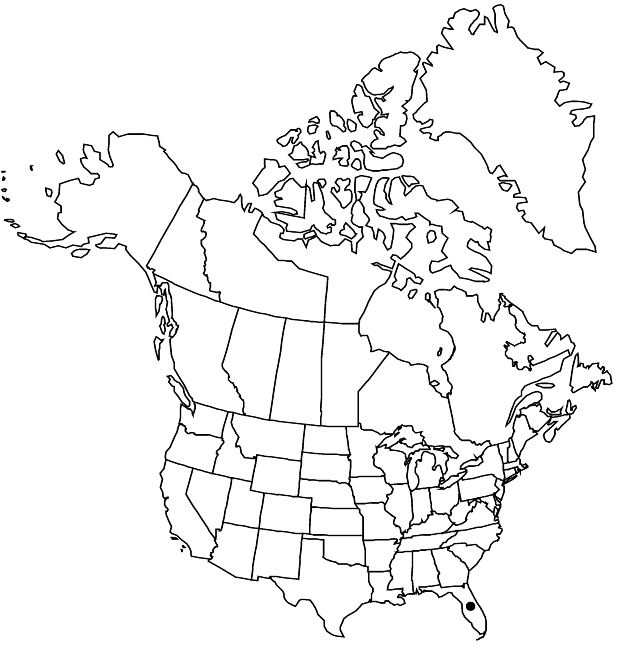Difference between revisions of "Diospyros maritima"
Bijdr. Fl. Ned. Ind. 13: 669. 1826 ,.
FNA>Volume Importer |
FNA>Volume Importer |
(No difference)
| |
Revision as of 23:02, 16 December 2019
Shrubs or trees, to 12 m. Bark dark brown to black, smooth and flaking. Leaves persistent; petiole 0.5–1 cm; blade dark green and glossy adaxially, elliptic-lanceolate to elliptic-oblong or slightly obovate, 7–15(–17) × 3–6(–8) cm, thick, apex obtuse, abaxial surface glabrous (or sparsely pubescent when young), with 2 basilaminar glands. Inflorescences solitary flowers or 2–3-flowered cymes, borne on twigs of current season. Flowers 1.5–1.8 cm; sepals 4; petals 4; stamens 16; anthers dehiscent along their entire length; pistillate flowers with 8 staminodes; styles 4, connate for most of their lengths; ovary pubescent. Berries yellow to orange or black, not glaucous, depressed-globose, (1.5–)2–3 cm diam., glabrous (except at apex). Seeds brown, ellipsoid, ca. 1.5 cm.
Phenology: Flowering intermittently year-round; fruiting year-round.
Habitat: Disturbed ground near shores
Elevation: 0-10 m
Distribution

Fla., e Asia (including Japan), w Pacific Islands, Australia.
Discussion
A common tree of coastal forests throughout the tropical western Pacific, Diospyros maritima is climatically well suited to seasonally dry southern Florida, with its salt-laden air, where it rarely escapes from cultivation. Although uncommon at present, it has the potential to become an established strand species, like Terminalia catappa Linnaeus or Casuarina equisetifolia Linnaeus.
Selected References
None.